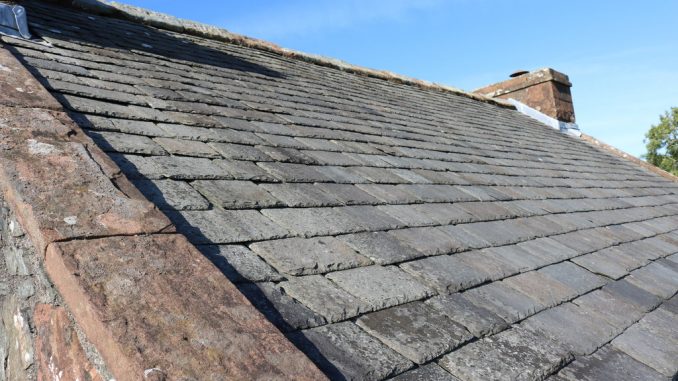
A slate roof exudes elegance and timeless beauty, making it a popular choice for both residential and commercial properties. However, to ensure the longevity and functionality of a slate roof, proper installation is crucial. One of the key factors that determine the success of a slate roof is its pitch or slope. In this article, we will delve into the importance of the minimum pitch for slate roof installation and how it impacts the overall performance of the roof.
Understanding Roof Pitch:
Roof pitch refers to the angle at which a roof slopes. It is typically expressed as a ratio of vertical rise to horizontal run. For instance, a roof with a pitch of 6:12 means that for every 12 units of horizontal distance, the roof rises 6 units vertically. Roof pitch is an essential consideration when it comes to roofing materials like slate, as it affects the roof’s ability to shed water and endure various weather conditions.
The Importance of Minimum Pitch for Slate Roofs:
Slate is a natural stone material that is highly durable and resistant to fire and extreme temperatures. It can sometimes be used for gravel and come in the form of blue slate chippings. However, its ability to shed water effectively is directly influenced by the roof’s pitch. To ensure a successful slate roof installation, the minimum pitch is a critical factor.
Water Drainage: The primary purpose of any roof is to protect the building from water infiltration. With the correct pitch, rainwater and snowmelt can flow off the roof efficiently, preventing pooling and potential water damage to the structure.
Wind Resistance: A higher roof pitch helps improve wind resistance, as it reduces the likelihood of wind-driven rain and debris entering the roof system. This is especially crucial in areas prone to strong winds and storms.
Longevity and Durability: A slate roof with the right pitch is less susceptible to water-related issues like leaks and rot. Proper water drainage extends the lifespan of the roof and ensures its long-term durability.
Determining the Minimum Pitch for Slate Roofs:
The minimum pitch for a slate roof installation varies based on factors such as the size and thickness of the slate tiles, the length of the roof span, local climate, and the roof’s design. While slate can be installed on roofs with relatively low pitches, it is generally recommended to have a steeper pitch for optimal performance.
Traditional slate roof installations often require a pitch of at least 4:12 (18.4 degrees) or higher. However, modern advancements in installation techniques and underlayment materials have allowed for some flexibility, enabling slate roofs to be installed on pitches as low as 3:12 (14 degrees) in certain cases.
Consulting a Professional:
When considering a slate roof installation, it is crucial to consult with a professional roofing contractor or a slate roof specialist. They have the expertise to assess your property’s specific requirements and recommend the most suitable pitch for your slate roof. Additionally, they can guide you on selecting the appropriate slate tiles and underlayment materials to ensure a successful and long-lasting installation.
Longevity of a Pitched Slate Roof
The pitch or slope of a slate roof plays a significant role in its functionality and longevity. A proper minimum pitch ensures efficient water drainage, wind resistance, and overall durability so you don’t have to spend too much on roof restoration. While modern advancements have allowed for some flexibility in slate roof installations, it is essential to consult with a professional to determine the ideal pitch for your specific property and roofing needs. By choosing the right pitch and working with experienced roofing experts, you can enjoy a stunning and enduring slate roof that adds timeless beauty and value to your property.


Leave a Reply